
T&I News 5 2021…
T&I News 4 marked a notable step change in activity online and on site. This post follows the trend, reporting on the steam tests carried out ahead of formal steam testing next week. As the sun was shining it also enabled Matt and I to take some nice photos along the way… Matt has worked with the engineering team on this work – they form a bubble of sorts, and work different days to the bus/vehicle team to enable social distancing. They also avoid sharing facilities, which makes for a safe approach but does limit the number of days we can currently have staff working for. However, this is all far better than the last few months when we’ve had so little to report! Matt has recorded the work in detail (and we hope to include some video of this soon), and has supplied the detail images for this post.
Glyder
Below: Glyder was in steam today, as these photos depict. The locomotive has had its cold boiler exam with our boiler surveyor, and this morning it was shunted onto the pit to enable reassembly and then filling with water. By mid-afternoon it was in steam and under test in order to ensure that everything was working as it should be and any adjustments can be made ahead of the formal steam test next week.
Below: Anthony is our Steam Technician, and he was testing Glyder following reassembly of the various fittings removed for the cold internal examination of the boiler. This work was carried out earlier this week, with the Simplex providing the motive power to shunt Glyder onto the pit.
Below: An attempt at something a little arty! The sunshine was the first that felt it really had some warmth in it so far this year. The nameplate and worksplate remain to be re-fitted to this side of the locomotive and are currently in the office for repainting.
Below: Following successful reassembly and steam testing, the locomotive makes its way back to its shed… It will be out again next week for the insurance company surveyor, all being well the locomotive will then rejoin the working fleet pending news of railway/transport operations at Beamish in 2021.
Peckett 1370
Below: Chris sent over some images of his work last week on the mud door for 1370 (as the rest of us cannot visit his working space to take step-by-step views as would usually be the case). The first view shows the door as received into the fabrication shop. Note the wear around the outer edge and clear thinning of the structure.
Below: With the door prepped, Chris then built up worn edges by welding around each circumference.
Below: These welds were then dressed back in order that the door conforms to the shape of the aperture on 1370’s firebox.
Below: The completed door in situ. This view also shows why the stud is off-centre, in order for the bridge to miss the adjacent stays heads. The smaller rivets below are the foundation ring rivets. The other doors are going to be similarly built up this week.
Seaham Harbour 18 (‘The Lewin’)
Below: In the last post, the failed tube on No.18 was depicted, and the solution of inserting a plug into the tube was mentioned. Up to 10% of the tube nest can be so treated, though at that point we would be looking to re-tube or stop the locomotive completely. With one tube leaking though, a plug is a feasible solution and with the boiler inspector’s sanction, work started yesterday. The first job was to lightly pressurise the boiler with water, to establish that there was just one tube that was leaking. This was confirmed at mains pressure.
In this photo, Don is manufacturing the tie-rod that passes through the tube, and has a thread at each end to secure the plugs in place within the tube ends.
Below: Here is one plug, tapered to fit tightly within the tube end, and with the threaded tie rod below. The copper component is a washer.
Below: The threaded ends of the tie rod, being cut in the Dean, Smith & Grace lathe in the machine shop.
Below: One of the plugs, assembled onto the tie rod. This is the firebox end, and the plug is blind , i.e. it does not have a hole right through it.
Below: A close up of the two plugs – the one on the left (for the firebox) has an integral nut, whilst that on the right will be held captive by a nut and washer. The tie rod can pass through this one, to enable it to be tightened within the smokebox and in doing so pull the firebox end plug up its cone and into the tube.
Below: Zoe machines flats onto one of the smokebox end nut, so that it can be tightened with a ring spanner.
Below: The corners are rounded off to the depth of the spanner…
Below: This photo shows the plug located within the ring spanner – this will enable a far better purchase to be achieved when tightening the nuts on the thread. With one at each end, and the tie rod running through the tube, the plugs are clamped into the tube ends to seal the tube up.
Below: The firebox end, showing the plug pulled up tight into the tube. Note the water marks from this tube leaking.
Below: Don applies the spanner to the smokebox end of the assembly, tightening the nut up against the plug. The loco was tested on Wednesday, and pronounced fit for its formal steam test.
Below: On Tuesday afternoon the two Pecketts were warmed through to enable any adjustments to be made pending full testing next week.
Kerr Stuart 721
Below: The team, working as a little bubble, having finished the tube plug for No.18 and lit it up to warm through, then turned their attention to 721’s boiler for the remainder of their afternoon on Tuesday. This was extremely productive, with the front tubeplate being extracted, as shown here.
Below: The old tubeplate, which will be replaced if the rest of the boiler is deemed repairable at reasonable economic and curatorial cost.
Below: A view inside the barrel. The firebox tubeplate is straight ahead, with the dome to the right; the boiler lying on its side at the moment.
Below: The girder stays on top of the firebox. At this stage, no cleaning up has taken place, so a full evaluation of the condition is not possible yet.
Remaking Beamish
Below: Another view of the works underway at present, with the Redhouse semis in the foreground and the Police houses now fitted with roof trusses to the rear. The front of the semis is to the right, so we are looking at the back wall and garden area, whilst the police house fronts onto the road to the left. A brick wall separates the two properties and offers some retention benefits, as there is a fairly considerable slope away from the camera here.




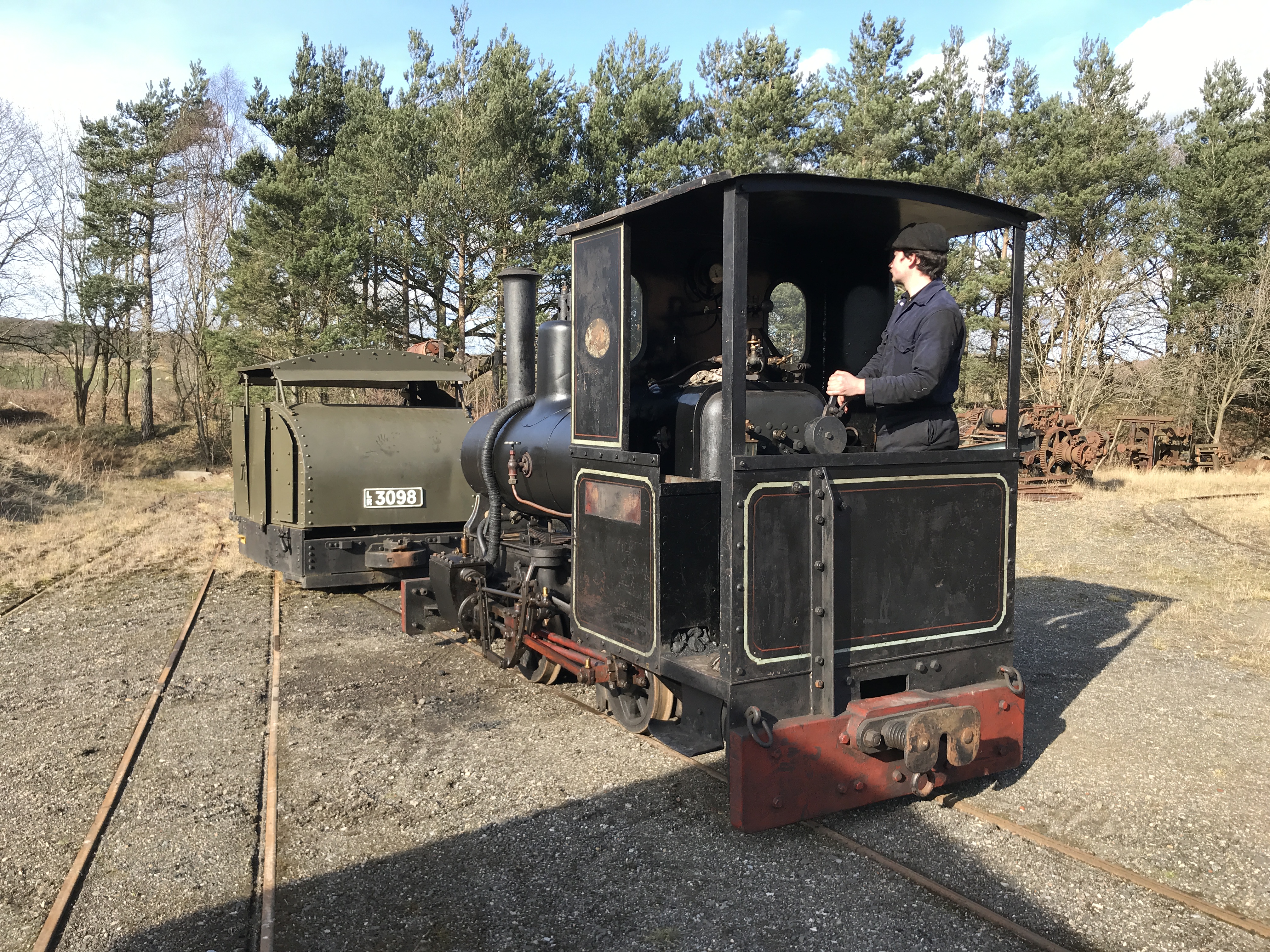

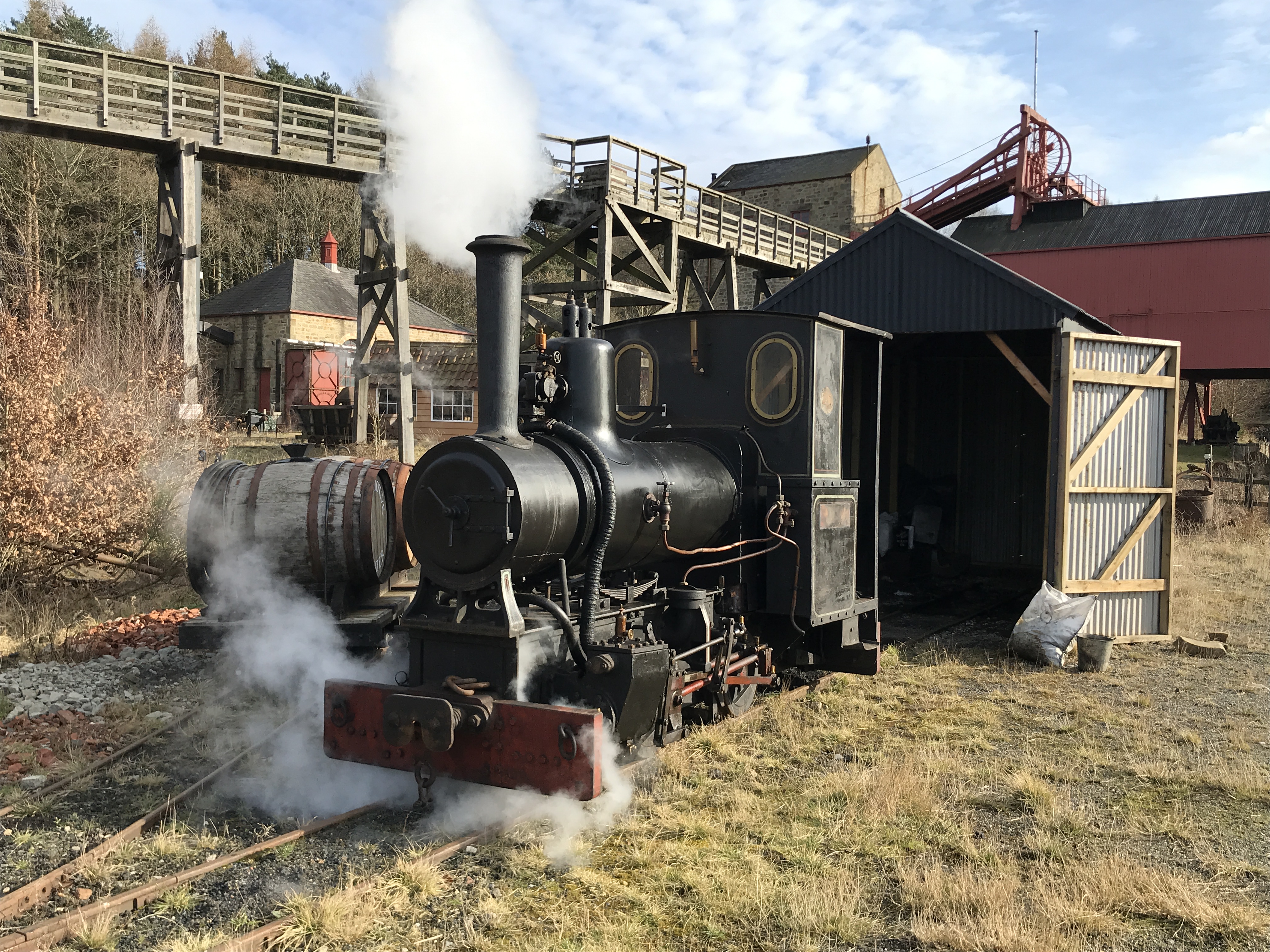
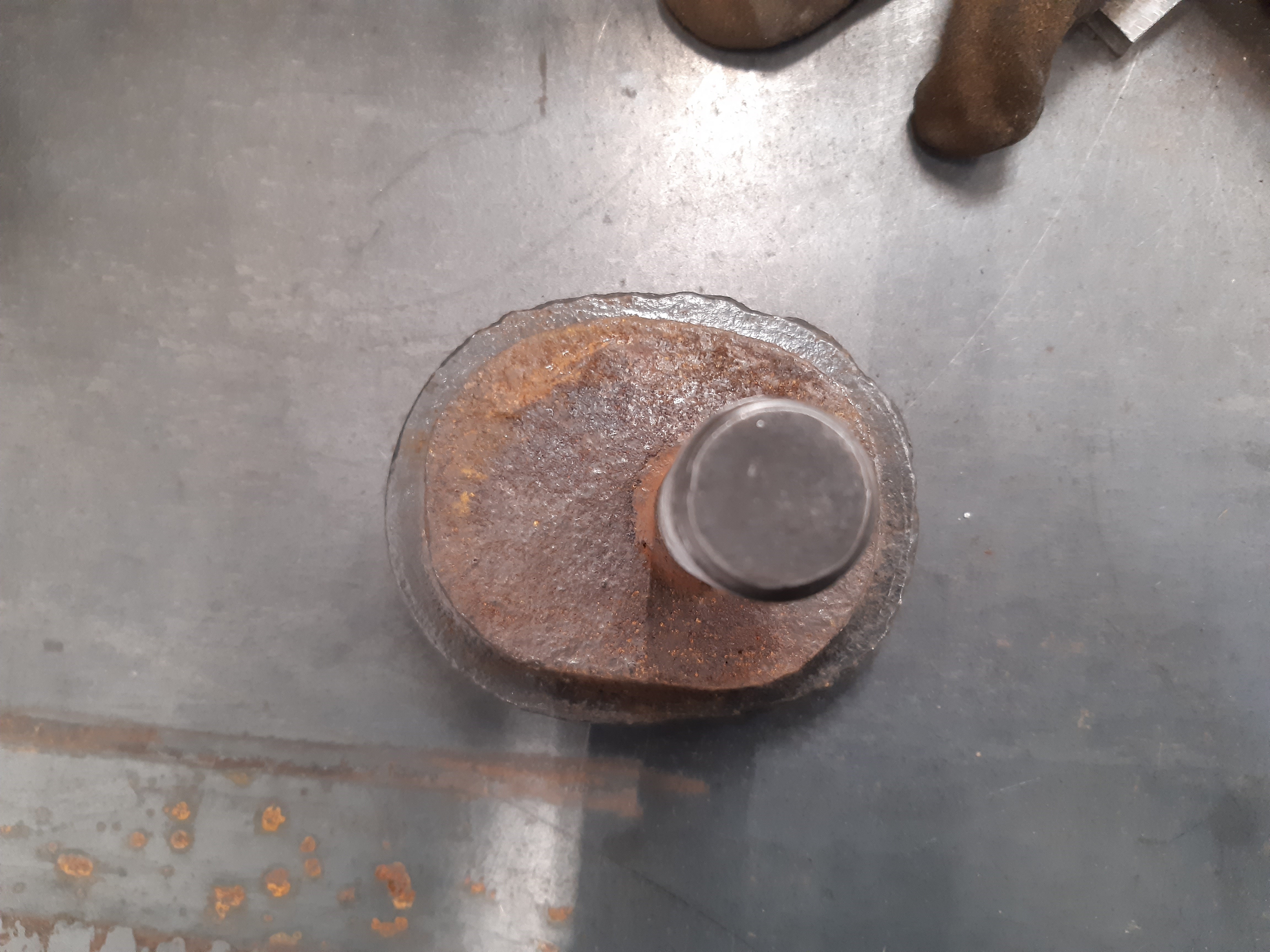




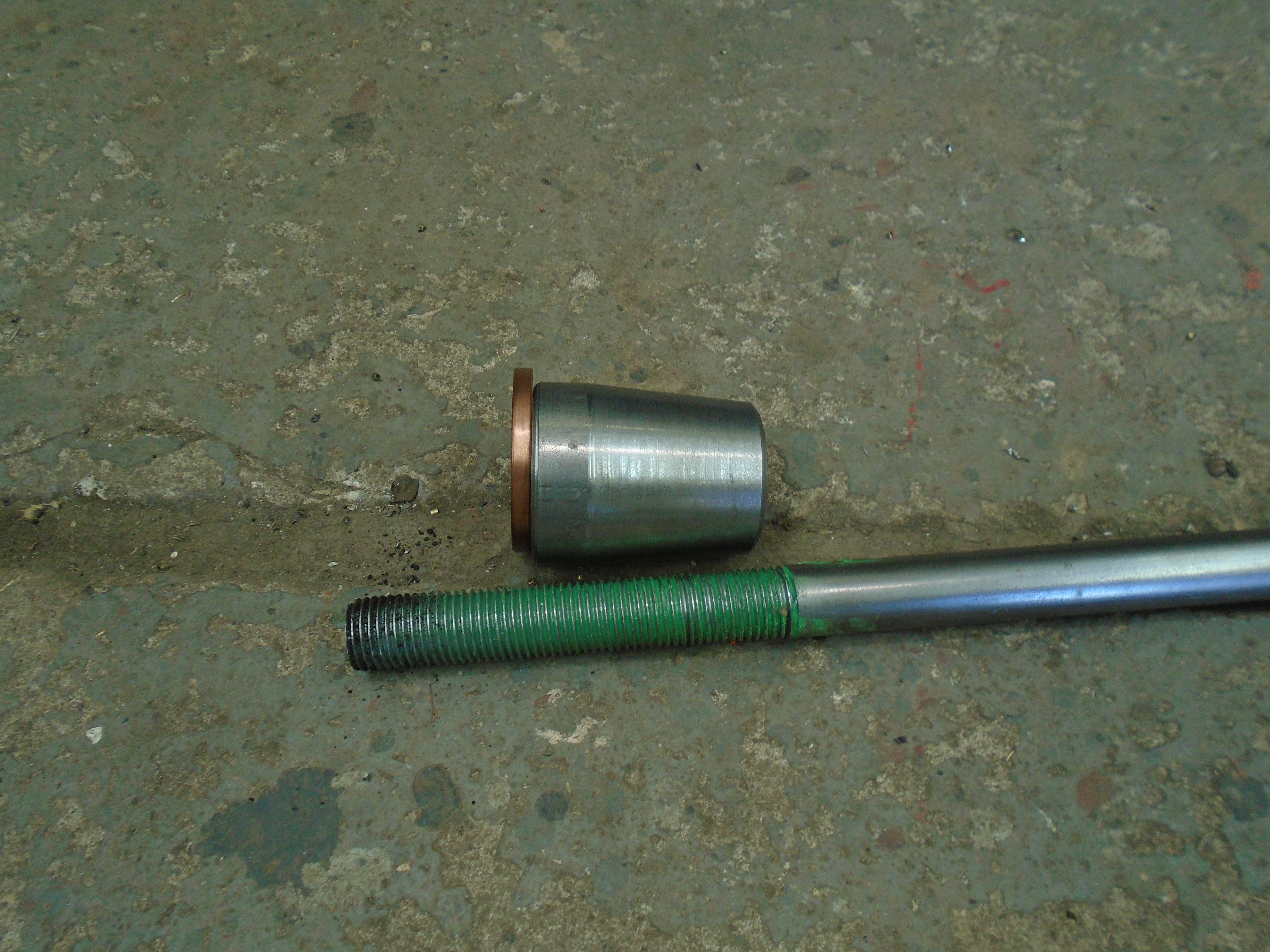

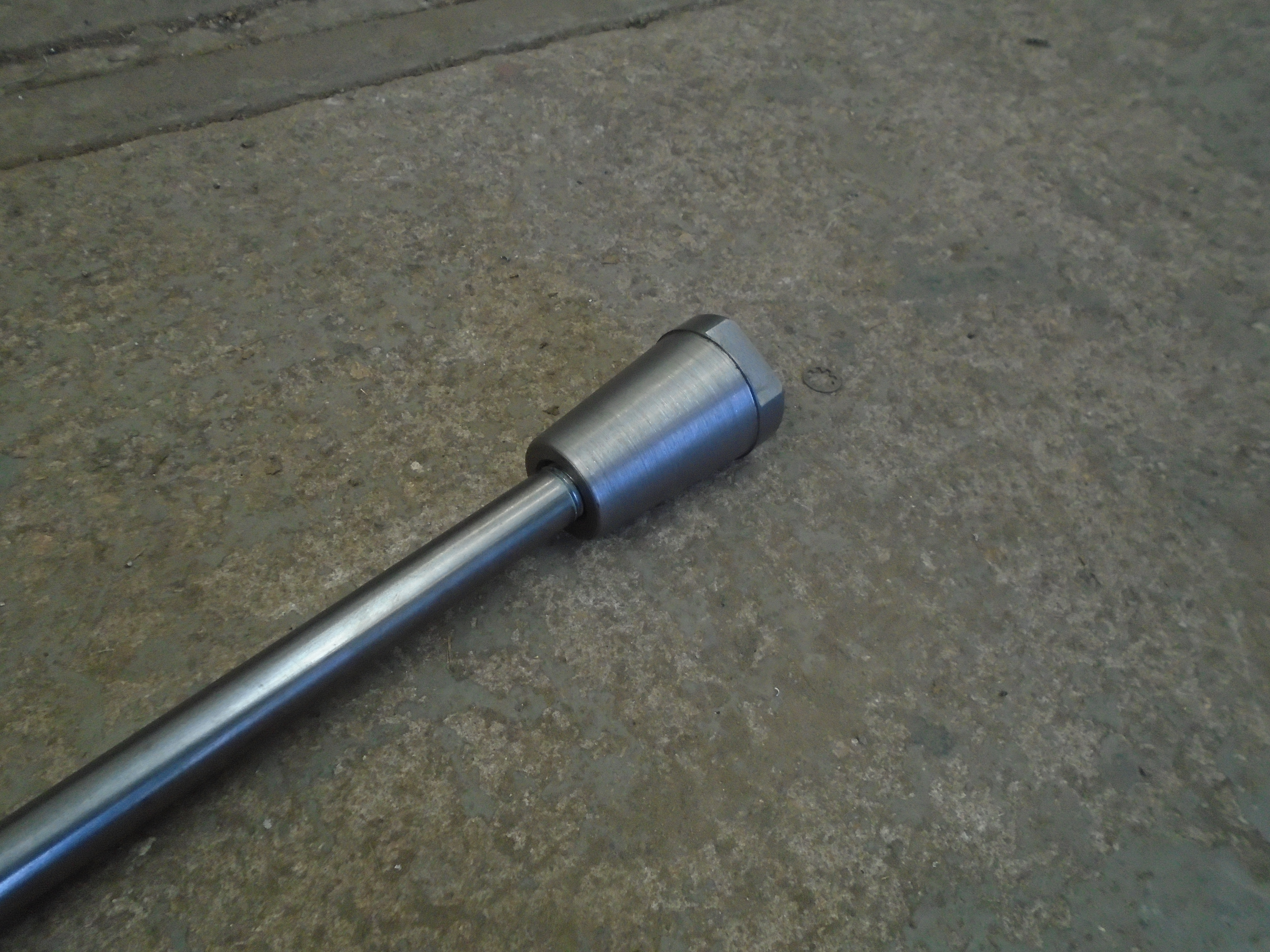





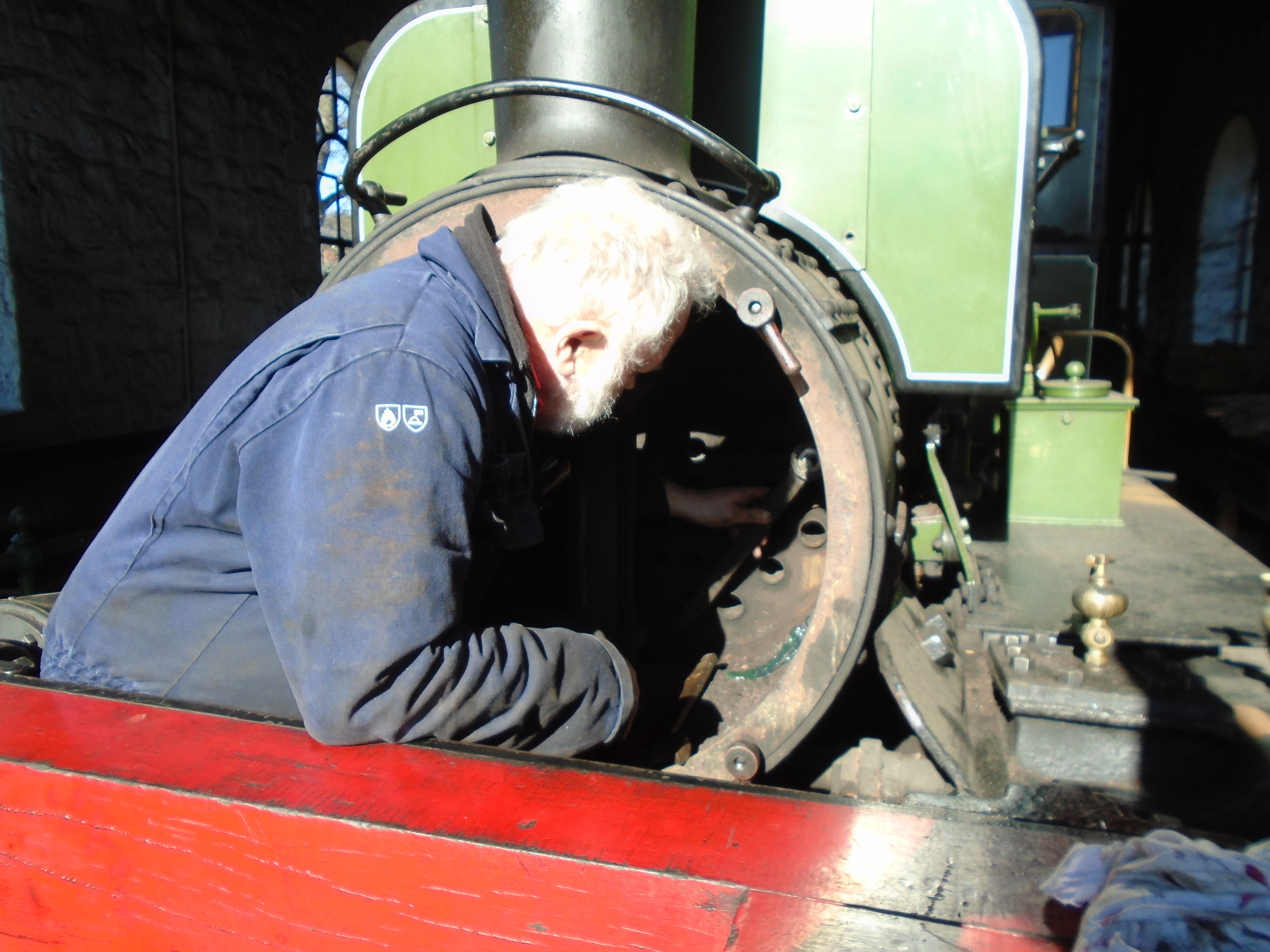
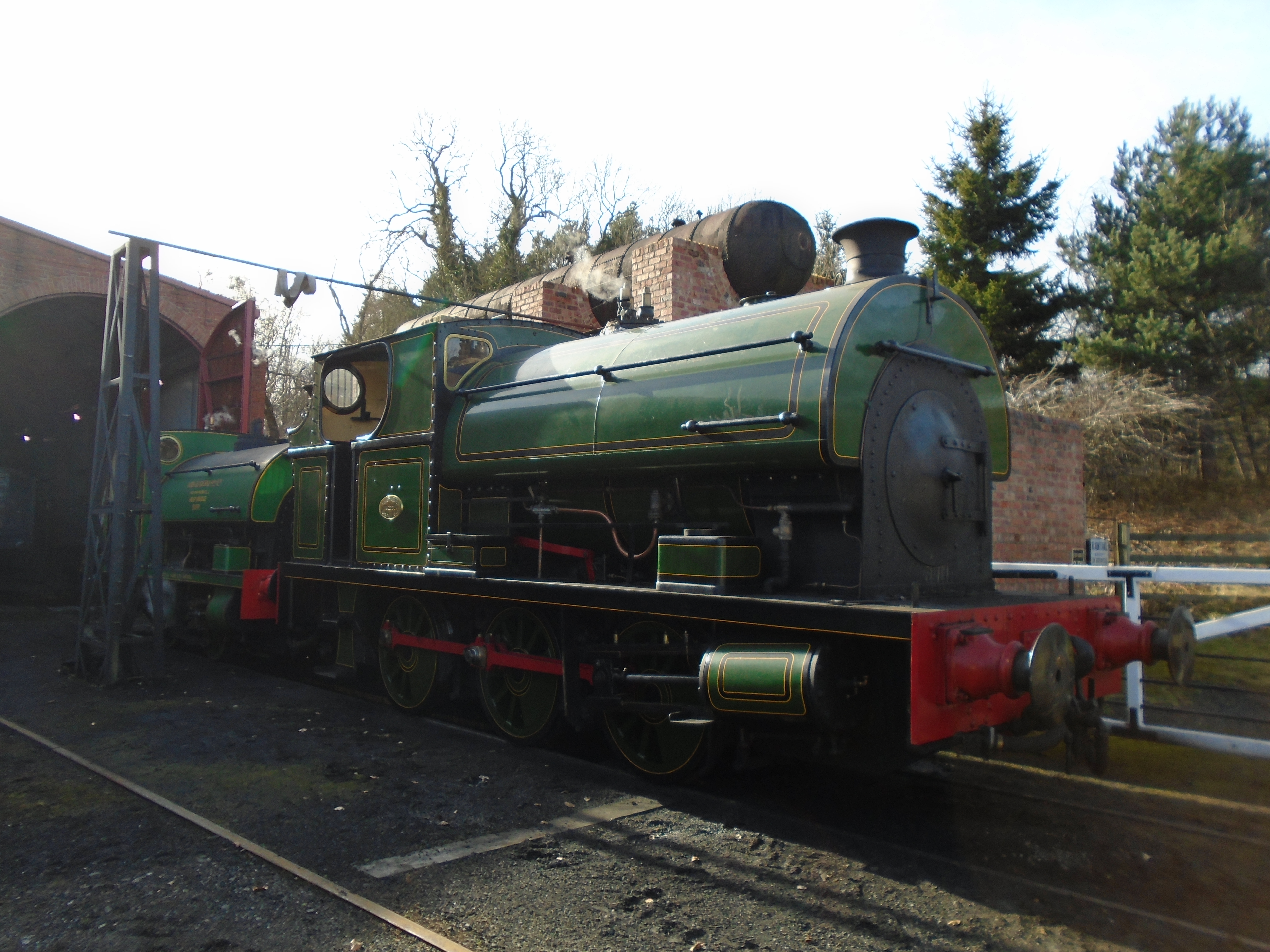
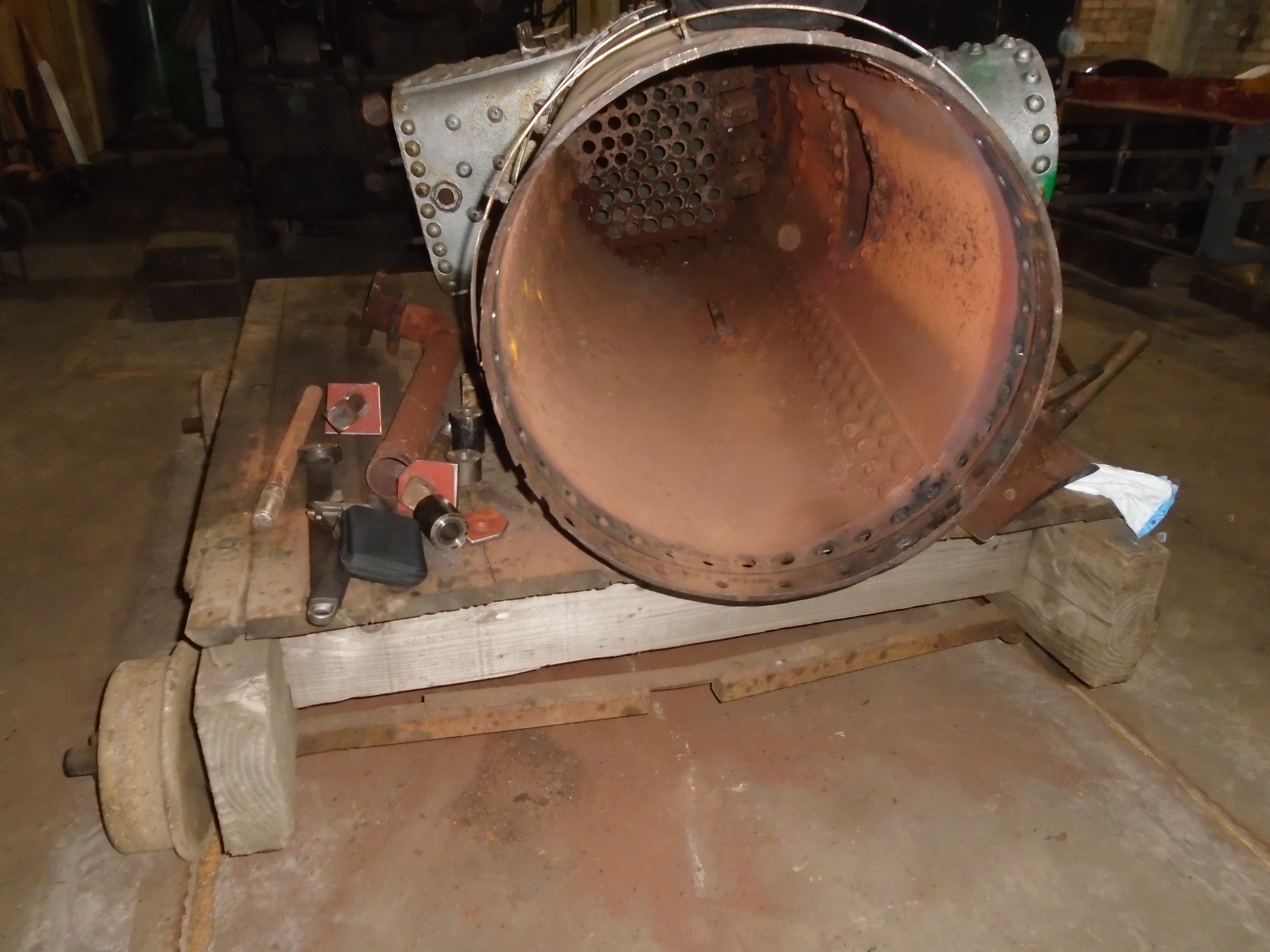
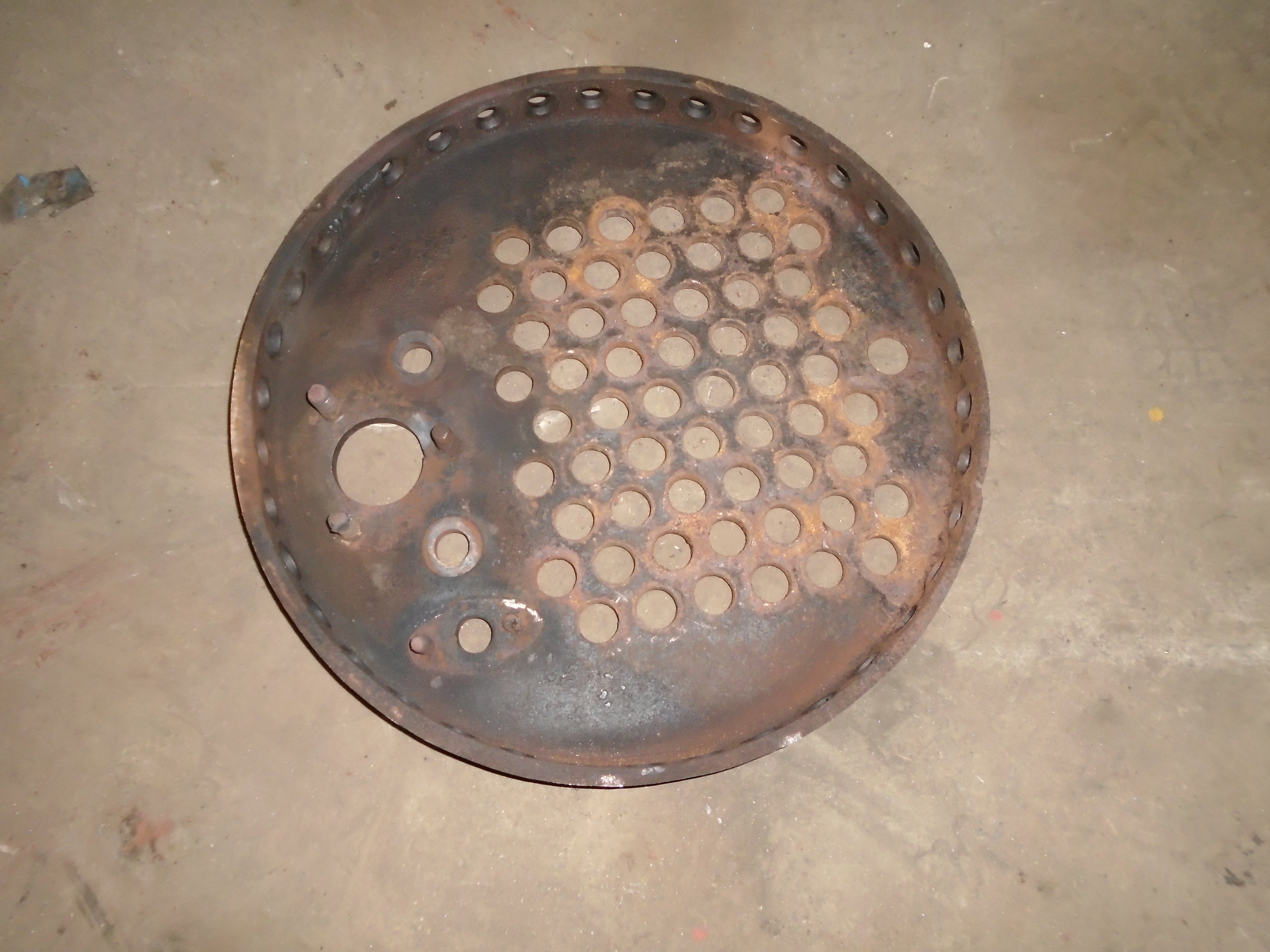

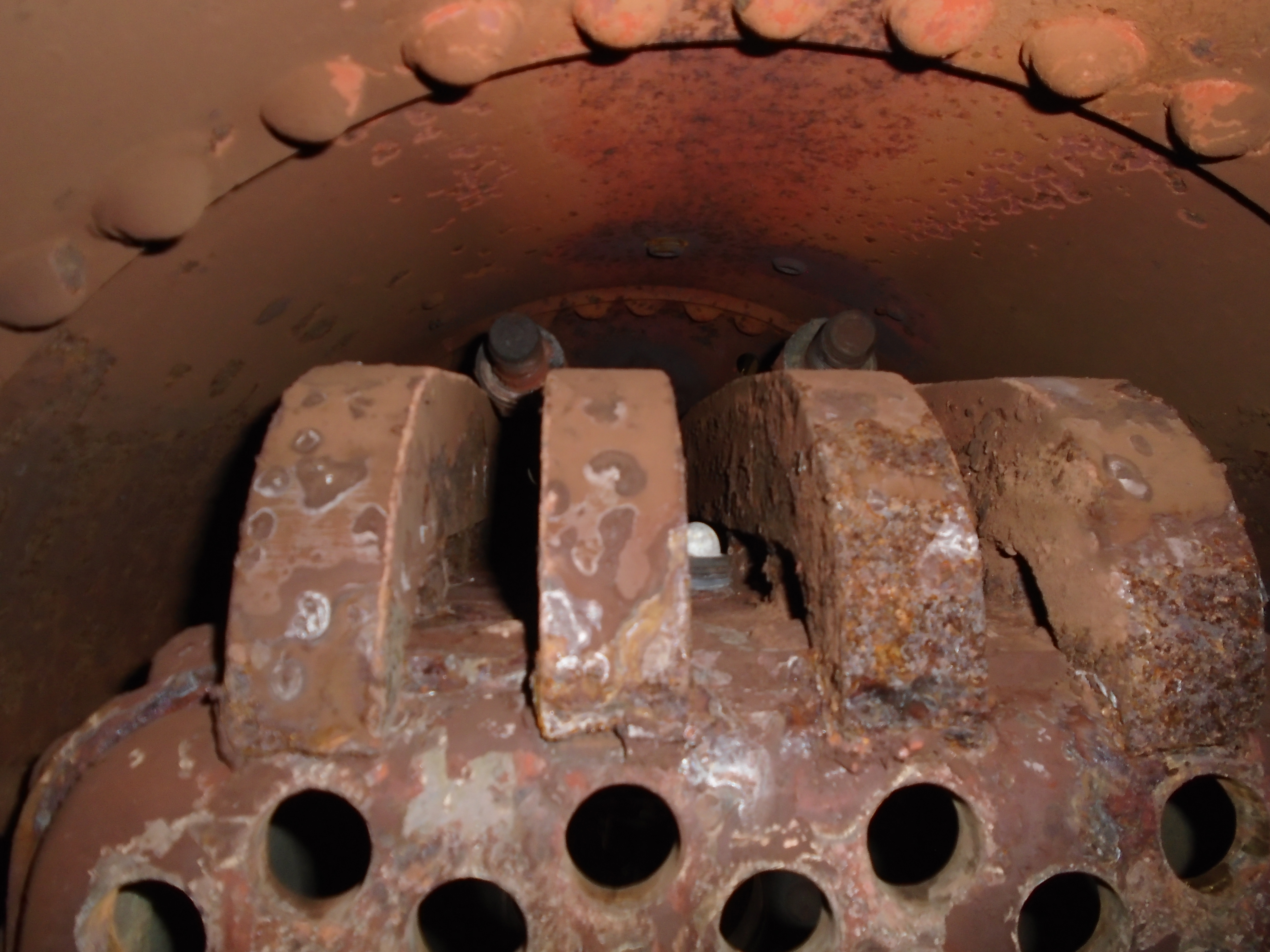






Very pleased to see the progress and some of the faces. It would be good if it possible to have a MUG SHOT PARADE and who does what.
Like the tooling shots.
Peckett 1370 working at the colliery, “Glyder” working on the adjacent Narrow-Gauge. Just dreaming – or perhaps possible during summer 2021? Hooe so.
Hi Michael – watch this space! We are relocating 1370 to the Colliery and we are developing a minimal-cost running/operating programme for the year ahead (we still need to trade our way out of this one) plus have a few events ideas lined up. Tricky with social distancing and ongoing furlough of staff, but we think we have something coming together that will hold the interest of visitors… Best wishes, Paul
Fascinating blog as always. Many thanks for sharing.